The history and curiosities behind the Great Work called Octavarium.
Speaking of Octavarium, is talking about Art, Numerology, Concepts, Similarities and cyclical things of life. Taking advantage of the fact that today this great work of the New Yorkers of Dream Theater turns 13, we will tell you the history and curiosities behind it that are many, prepare your mind for this trip.
When was Octavarium published?
It was published on June 7, 2005 and is the eighth studio album of the progressive metal band Dream Theater, which also coincides with the 20th anniversary of its formation. From the beginning it begins with the similarities of number 8. The band was the last to record at The Hit Factory Studios in New York, before closing its doors forever.

Source
First of all, is it a conceptual album?
Octavarium is an atypical conceptual album, in which music, letters and graphic art turn out to be essential protagonists, if not the most important ones, of this album. Each theme tells a different story, being the point of union that establishes the homonymous theme with each of them. The underlying basis of the work is the cyclical conception of life, the circular idea of things, the cycle that leads them to finish where they started, repeating itself.
"All I can say is that it's conceptual, but not the traditional way of telling a story... It's something different. It is available to fans so that they themselves unravel their secrets." - John Petrucci.
Where does the origin of the name "octavarium" come from?
First, it is remarkable that the name Octavarium was not mentioned at first as the title of the album, but that the title Octave was intended. However, when the progressive rock band Spock's Beard released their (also eighth) album Octane (before, in 2005), Dream Theater decided to change the name to make it a little different from that. Thus, finally the title consisted of the very opportune and aesthetic Latin word octavarium, noun originated from the union of the adjective numeral octavum (neutral) and the locative suffix -arium, whose translation would be more or less place where the eighth is. The title is very suggestive regarding the content of an album, since it revolves around the concept of the musical octave and consists of a compendium of various conceptual and musical "octavos". The title does not necessarily refer to the book of Catholic liturgy Octavarium Romanum but it can not be said that the band was not inspired by this work in any way.
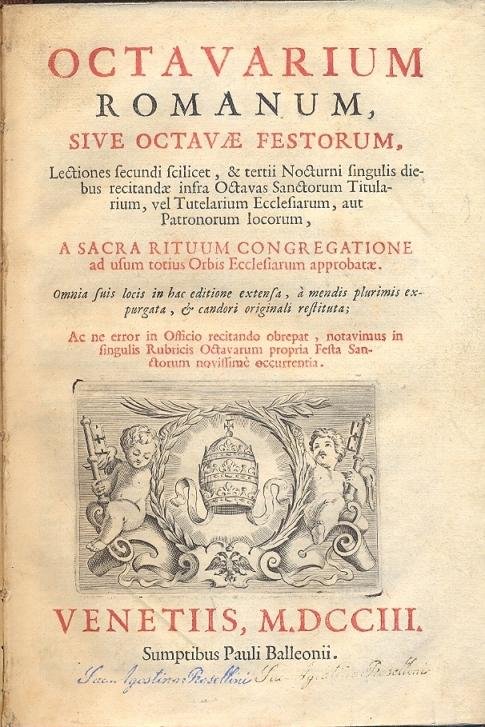
Source
These numbers, 8 and 5, appear at all times in the album and in the history of the band. Looking at it from a historical point, the word Octavarium reveals very little. The only place where it appears is in a historical book of the Vatican, called Octavarium Romanum, which talks about various Catholic festivals. However, throughout the book you can see numbers 5 and 8 notably. The book is mentioned for the first time under the pontificate of Sixtus V (1585-1590) (Sixtus FIFTH in the year 1585), and was not mentioned until it was again brought by Clement VIII (1592-1605) (Clement EIGHTH).
It is interesting to note that Octavarium follows a pattern started with Dream Theater's sixth studio album, Six Degrees of Inner Turbulence, which has 6 tracks and the word six (six) in the title. The following CD, Train of Thought (or that could also be written like this: 7rain of 7hought), contains 7 tracks, and Octavarium follows both apparent tendencies, with 8 tracks and a title related to number eight.
Each song of the album shows in its title the key signature in a different minor mode, starting with fa, then sun, the, yes, do, re, mi and returning to fa, as well as a metric type: 1/8 in the first song, 2/8 in the second, and so on until you reach "Octavarium" which is written 8/8. However, these references have little to do with what you hear (the songs are actually in other tonalities and metrics, although they modulate and change in several moments).
All artistic design plays an important role in Octavarium.
The artistic design of the album is in charge of Hugh Syme, and it is of great help to understand the concept of the work and the interrelation of its parts.
The symbolism can still be seen in the disc booklet, which contains 8 pages. In the album brochure, when it is open, you can see a Newton pendulum composed of 8 spheres. This device is known for repeating the same movement over and over again, emphasizing the great concept contained in the album.
What is Newton's Pendulum?
It is a toy made up of five identical balls, each of which hangs from a frame by a pair of threads of equal length, so that all of them are in contact and aligned. When one of the balls is separated from one end and allowed to collide with the others, it is observed that the ball at the other end is set in motion and reaches the same height as the ball that was initially released, while the rest of balls is at rest. Newton's Pendulum is based on the law of energy transfer. The nature of this theory describes how energy is not created or destroyed, but passes from one physical body to another.
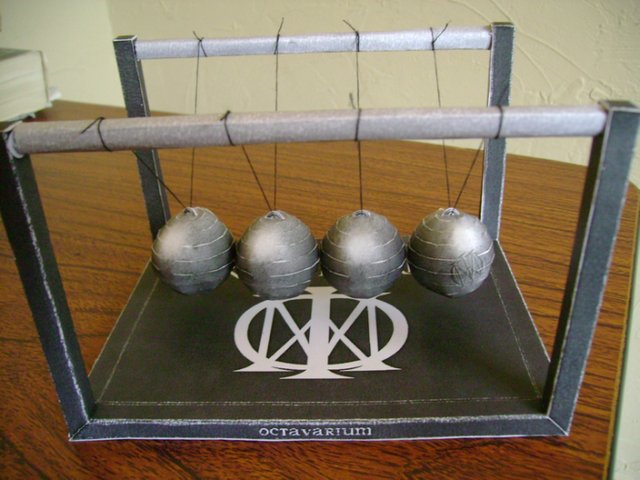
Source
The crows on the cover.
Frequently, crows are considered as bearers of bad omens or omens of death. They also symbolize the transition of the spirit towards eternal life. English speakers differentiate two types of crows: one is called crow, which symbolizes the spiritual side of death, and another called raven, which is associated with the negative side of death. Typically ravens are very sociable animals (non-ravenous), but there are others (ravens) that do not seem to congregate in large numbers, except when they gather to devour carrion or in cemeteries, where they occasionally live together in large numbers. It is worth noting that the order of the white and black keys in the image on the back cover is the same as the crows (black key) and the pendulums (white key) in the image on the cover. In the image of the plain it is inferred that the crows represent the 3 ex-integrants of Dream Theater (to date); two crows that fly away and a third perched on one of the two stones or stone dominoes (as is known, domino is a game of chance, a game of numbers, probabilities and coincidences).
If you appreciate the 5 birds in the image, you will see an octave of the piano (the spheres being the white keys and the birds the black keys). This octave theme, too, will be continuously seen throughout the album.
The spider (eight-legged animal), trapped in a labyrinth of octagons, and the five-pointed star bordered by an octagonal wall of four walls, is said to symbolize the isolation of our own reality.
Inside the booklet, on the first and last page, there is a child with a can tied to a rope. The idea is that the beginning and the end of the disc are connected to each other ("This story ends where it begins On the one hand, the child is talking on the tin and, on the other hand, he is listening. first image you see 3 fingers of the child, and in the other 5.
The images of the child (which could represent the innocence or purity of the human being), talking and listening to himself through a telephone wire and tin, tell us that the solution is inside us, you just need to know how to listen to ourselves.
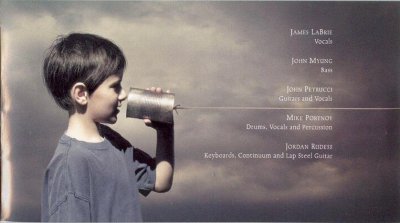
Source
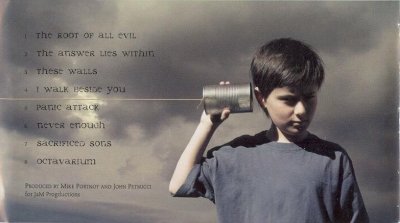
Source
The diagram of the star and the octagon is full of dimensions. And the dimensions, as indicated by Görgenyi Tamas (After Crying), intend to show some links that connect the most important elements of the work. In the case of Octavarium, Dream Theater quotes quoting well-known words or phrases, and well-known compasses of its great predecessors (Yes, Pink Floyd, ELP, Genesis, King Crimson), in order to generate an association of ideas and thoughts. In the case of the diagram, the dimensions indicate the compass of each theme.
A star inside an octagon, where you can see many references to numbers 5 and 8. The scale of the graph is from 5 to 8 (Scale 5:8) and the image is titled as Image 8 (Figure 8). The dimensions are 29'6.75 "of a square, with straight triangles with 8'8" legs. There are spaces between each wall 5'8 "long. The lidia scale of Fa (F) is spelled around the graph. There are also doors on four sides of the octagon, of which only the bottom one is open. This symbolizes that one can enter the room and go through it, but even then the exit will be the same as the entrance.
Next to the lyrics of "The Answer Lies Within" there is an image of two dominoes, one that adds 5 and another that adds 8. On them, there are 3 birds that probably represent the 3 ex-members of Dream Theater ( Charlie Dominici, Kevin Moore, and Derek Sherinian), being, the two that fly, the ex-keyboardists, and the other inn in the domino would come to be the ex-vocalist.
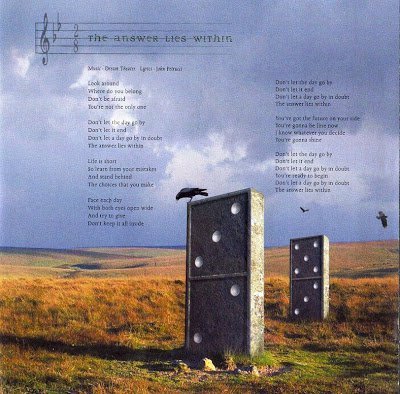
Source
The octopus has eight tentacles, and there are five fish around it.
The stop sign ('stop') has eight sides.
Inside the box, behind the disk, there is a black billiard ball (that of number 8) with the Majesty logo on it.
An octave on the keys of a piano (8 white keys and 5 black keys) is visible behind the disc case. Each white key represents each song on the album, in order, starting with the note Fa (F), implying that each song is in the note of the key it is on.
The number 8 is an infinite symbol because its path has no end, like the disk that ends where it started.
The Numerology placed in Octavarium.
Put very briefly, numbers are archetypes and archetypes are two very different ways of experiencing existence: physically and psychically. An archetype appears in consciousness as a subjective reality, but due to its origin in the collective unconscious, it represents an objective reality. Jung says that the basic archetypes are numerical and that number is the key in the relationship between the physical and psychic spheres. It is both quantity and meaning. For the Pythagoreans, the numbers were cosmic principles that included the material and spiritual side of things. When we include the qualitative aspect in addition to the quantitative one to the numbers, these cease to be only quantities to acquire an archetypal nature such as Unity, Opposition, Conjunction, Termination, etc. Dream Theater takes this idea to the concept of the album and gives special importance to three numbers: 8, 5 and 3.
What's happen with the number 8?
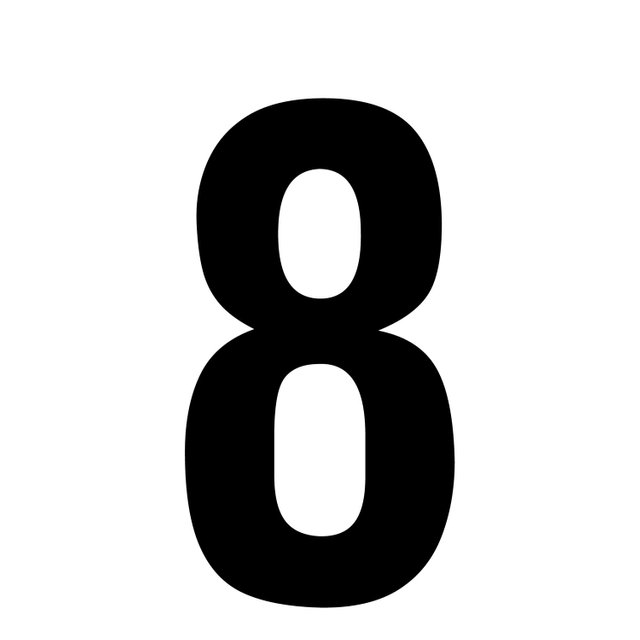
Source
The number 8 represents Victory in the Tarot cards. In its Pythagorean interpretation it means balance, fulfillment, heaven and earth, the four elements of the body governed by the triple soul, the cosmic law and the natural rhythm. It also indicates fairness and justice and is the mathematical symbol of infinity. The octagon is the intermediate figure between the square (terrestrial order) and the circle (celestial order), which symbolizes regeneration, the transition from the contingent to the eternal. The 8 and its relation with the album are expressed in multiple facts:
In the name Octavarium it is inferred 8 parts of something.
It is the 8th Dream Theater studio album.
The album consists of 8 songs.
The Octavarium suite is the 8th track on the disc.
8 pendulums appear on the cover image.
One of the dominoes adds 8 points.
The labyrinth is an octagon.
The labyrinth has 8 accesses and 8 obstructions to the spider.
The spider has 8 legs.
The underwater pictogram is an octagon.
The octopus has 8 tentacles.
The scale diagram is an octagon.
The scale of the diagram is 5:8.
On both sides of the back cover 8 white keys can be seen.
The notation from 1/8 to 8/8 is read on the staves of the letters.
The staves show 8 different tones for each theme.
8 are the crows that appear in the disc brochure.
8 is the black billiard ball that you see on the back cover (under the disc).
8 are the octagons that are counted in the disc brochure.
8 in horizontal position is the symbol of infinity.
The musical structure of the disc is based on the octave.
8 members in the history of DT (not counting Chris Collins of the Majesty group, as of 2005).
The word Octavarium appears printed 8 times on the album.
The Octavarium World Tour started in 8 European countries (Sweden, Holland, Switzerland, Austria, Spain, Italy, France and Belgium).
Does the same thing happen with the number 5?
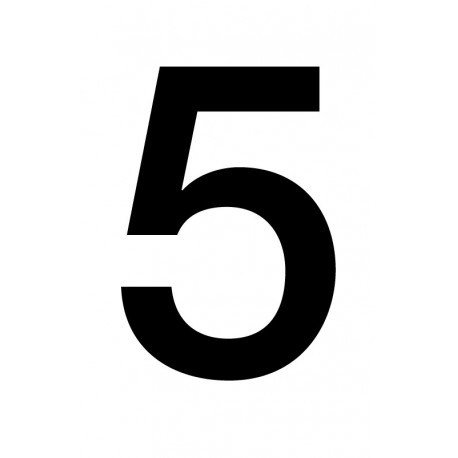
Source
Number five, according to A. Keeling, is a magic number. The number of confusion and quarrel, and of intense vibration. It represents the fusion of the mortal body with the discipline of the spiritual. It is the number of fire, struggle, competition and light. It is also considered the number of evil. The 5 and its relation with the album are also very special:
- DT was formed in 1985.
- Octavarium is launched in 2005.
- 5 are the current members of DT.
- 5 are the official DT live albums (as of 2005).
- 5 are the crows on the cover.
- 5 is the number that appears in the domino.
- 5 are the fish followed by the octopus.
- 5 are the octagons that the spider crosses in its labyrinth.
- 5 peaks has the star inside the octagon.
- 5: 8 is the scale of the diagram.
- 5 black keys have the keyboard on both sides of the back cover.
- 5 are the parts that make up the Octavarium suite.
- 5 are the syllables, vowels and consonants of the word octavarium (oc-ta-va-ri-um).
- 5 of the 8 songs on the album were recorded with Mike's drums in Hammer of the Gods; in addition that kit was the eighth one that has had.
What coincidences exist with the number 3?
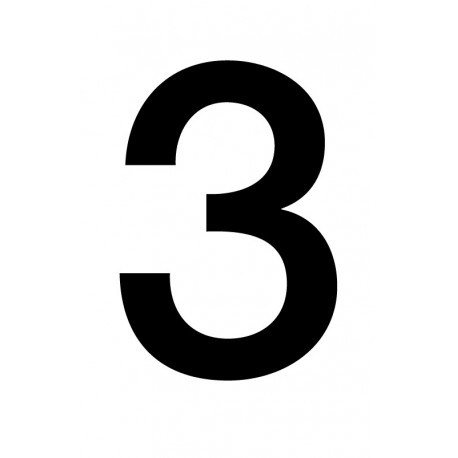
Source
Number three is the creation number. It gives energy to the numbers with which it is associated. It is also the number of arts, music, and literary creation. The 3 and Octavarium also have a certain relationship:
- 3 is the difference between 5 and 8.
- 3 are the former members of DT (as of 2005).
- 3 are the crows in the domino image.
- 3 is the number that joins the two dominoes.
- Represents the union between 5 and 8.
Does the back cover have any special meaning?
On the back of the disc, you can see the part of a piano, each white key represents a song on the album, and each black key represents an interstice between the songs. The octave in music is defined as the set of notes contained in an interval of eight degrees or sounds of the musical scale, in a piano the octave is formed of eight white and five black keys. Musically educated fans have discovered that each song represents a note, starting the first track with Fa and continuing to form an octave on the piano, and that each of these notes is the largest relative to the tone of the song. Therefore, each song is in a different lower ascending tone, as corroborated by the staves in the Sun key next to the letters printed in the album brochure.
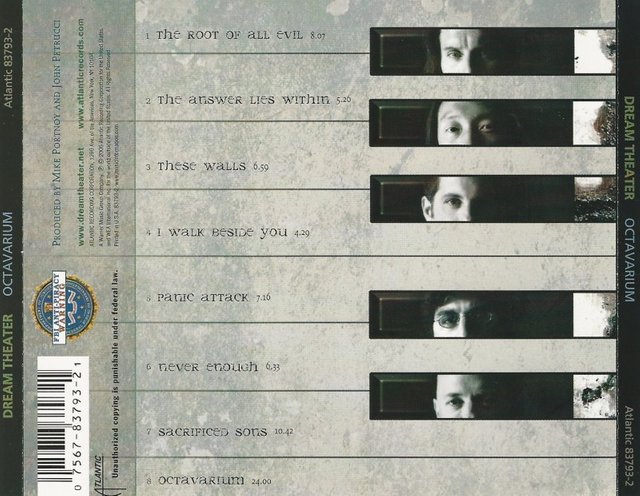
Source
And what are these interstices?
The interstices represented by the black keys, are musical interludes between some of the songs on the disc, and appear in the same order in which the black keys of the piano are located on the back cover. These interludes or spaces, as some may have noticed, are not recorded by the digital counter of the CD player. In the table it is observed that the interludes are played in the same tone of the corresponding piece.
If you check the Octavarium disk box, we discover that the sum of all the numbers of the bar code, 7 + 5 + 6 + 7 + 8 + 3 + 7 + 9 + 3 + 2 + 1 = 58 Impressive?
Is it true that each Octavarium theme represents one of DT's previous albums?
Officially, at least, no. There are many theories that say so, or even some say that each 8V song represents a particular song of each album, but the band has not confirmed this. What is certain is that in each topic you can find some curious references to other albums and even Octavarium itself.
What is it about The Root Of All Evil?
It is the continuation of The Glass Prison and This Dying Soul, as it forms the sixth and seventh steps of the Alcoholics Anonymous saga written by MP, the Twelve Step Suite.
What references does The Root Of All Evil hide?.
Step noise can be a reference to Scenes From A Memory.
The drum filling at the beginning of the song (0:25 - 1:00) is the same as the ending of This Dying Soul.
In the introduction, before the drums, the first chord of the guitar is the same one that was played in the introduction of the concerts of When Dream and Day Unite in 1989. This same chord is heard in the DVD menu screen of When Dream & Day ReUnite.
In this song the melody of the chorus of This Dying Soul is heard.
Part of the vocalizations (4:55 - 5:16) are similar to those of This Dying Soul.
The start of the solo (5:18) is very similar to that of The Glass Prison.
A variation of the Octavarium melody from 7:33 to 8:02 is heard.
The piano note at the beginning is in E flat, the same note that In The Name of God ends.
What does The Answer Lies Within speak about?
This is a subject that speaks of self-confidence and faith in the future; It could be interpreted as a show of support from JP towards MP and his fight against alcohol addiction.
What references does The Answer Lies Within hide?
At minute 2:36 a violin plays in the background a variation of the theme Octavarium
In the interval 2:42 - 2:48 the vocal melody of Octavarium is heard, "medicate me, infiltrate me", just before LaBrie starts singing the line "You've got the future on your side"
In the interlude or hidden part at the end of the track, you hear a transition that sounds very similar to the end of Great Flood in the Sky by Pink Floyd
The start bell rings 8 times, just in the same tone as in The Glass Prison
Why is The Answer Lies Within placed on the second track on the disc?
"Equally important is the order in which the songs are placed on the album, all I can say now is that it was the concept behind Octavarium that forced this song to be the second song on the album." - Mike Portnoy.
Who plays the string section of The Answer Lies Within?
It is a string quartet composed of Elena Barere (First Violin), Carol Webb (Second Violin), Vincent Lionti (Viola) and Richard Locker (Chelo). The director is Jamshied Sharifi, who directed the Octavarium Orchestra in Score.
What is These Walls about?
This topic written by John P is about personal relationships and mutual support in the couple when one of them finds difficulties.
Is there any hidden reference in These Walls?
Yes, just one, and hold on because it's very good: in the final part, the heart beats at a rate of 58 beats per minute.
What does I Walk Beside You talk about?
Another topic with a religious vision of John P. In it, the guitarist gives us to understand that when we believe that everything is lost and we feel alone, Jesus Christ will always be there to walk by our side.
Something to tell about I Walk Beside You?
Not much, the only thing is that the clock sound at the beginning could be a reference to the start of Scenes From a Memory.
What is Panic Attack talking about?
As its name suggests, this JP theme perfectly describes the symptoms of a panic attack. It is not known if it is based on a personal experience, but the fact is that the letter is very successful in its purpose
What references does Panic Attack hide?
Skeezix Riff Delima from Tourniquette at 0:15
The piano part (1:27 - 1:43) sounds a lot like Fatal Tragedy from SFAM
Iron Maiden's bent guitar line in 5:43
The final chord sounds 5 times on each speaker, from the first time it sounds to the almost inaudible ending
The hidden interlude looks a bit like that of Pink Floyd's Several Species of Small Furry Animals Gathered Together in a Cave and Grooving With a Pict
What does Never Enough talk about?
The lyrics are a plea by Mike P against the ungrateful fans who never agree with what DT offers them and who are criticizing all the time whatever they do. Many took this issue as a personal attack and since then they repudiate it more than they can.
The whole song is almost equal to Muse's "Stockholm Syndrome", both in structure and in arrangements.
- The melody during the chorus refers to one of the solos of David Gilmour of "Echoes", in the version of "Live at Pompeii".
What is Sacrificed Sons about?
This James LaBrie theme is an ode to the heroes of September 11th.
What references does Sacrificed Sons hide?
The 3:35 minute seems to allude to the final part of the Beatles' She's So Heavy.
In 4:41 there are allusions to A Change of Seasons, Peruvian Skies, Fatal Tragedy, and Natural Science (Rush)
From 7:02 to 7:32 the melody of the lullaby Teddy Bear's Picnic is heard
Where are Sacrified Sons samples from?
They are a compilation of several TV and radio programs broadcast during the attacks on the WTC on September 11, 2001. This is what they say:
This has all the appearances of an extraordinarily well coordinated and
devastating terrorist attack ...
Terrorism against our nation will not stand; the government
will hunt down those resposible ...
Terrorism means striking terror in the hearts of people, that has been
accomplished ...
Looking in awe, amazement, shock and grief and anger at what they
were seeing in front of them ...
There has been a huge explosion ... you can see, uh, a billowing smoke
rising, there was a cascade of sparks and fire and we see this extraordinarily big,
frightening scene behind us ...
There is panic on the streets, there are people screaming and running ...
Good lord, there are no words.
3000 Palestinians ... chanting "God is good" ...
This is just a horrific scene and a horrific moment, but just look
at that. That is about as frightening a scene as you will ever see.
But there are times in your life that are life changing, where your
life can never be the same and this one appears to be one of them.
Is it an orchestra that we hear in Sacrificed Sons and Octavarium?
That's right, an orchestra led by Elena Barere, which has the following staff: Katharine Fong, Ann Lehmann, Katherine Livolsi-Stern, Laura McGinniss, Catherine Ro, Ricky Sortomme and Yuri Vodovoz to the violins; Vincent Lionti and Karen Dreyfus to the violas; Richard Locker and Jeanne LeBlanc to the cellos; Joe Anderer and Stewart Rose to the horns; and Pamela Sklar on flute.
What is Octavarium about?
Octavarium is divided into 5 parts that do not share a specific lyrical theme. Throughout its 24 minutes, tributes and lyrical and musical quotes are interspersed with great bands and themes from the past. Octavarium is by itself a progressive suite based on the most distinctive elements of that style, and it also stands as a kind of monument to progressive music in general.
Someone Like Him: some theories maintain that it is a direct continuation of the Carpe Diem of A Change of Seasons, but it does not seem very probable. The most generalized thought maintains that it refers to the musical career of John Petrucci, who first feels admiration for his idols, but without wanting to be a musician, and then changes his mind realizing that this was precisely what he wanted from the beginning.
Medicate: coinciding with the idea of the circle, this section begins and ends with a catatonic dream. It is not known with certainty how it connects with the previous section, although some say it may be an interpretation of the film Awakenings from the point of view of Robert Deniro. Others say that it narrates the personal experience of JLB when operating on the vocal cords during the Waking Up The World tour, the catatonic dream being a metaphor.
Full Circle: this section is full of references to old progressive glories. Some claim that MP is suggesting with these letters that they have taken the place of their idols in the world of music or in the record industry, closing the circle they started 20 years ago.
Intervals: in this section, the lyrical concepts of each one of the Octavarium themes are reviewed. The intervals also refer to a number of steps. When Mike Portnoy says "octave", this part ends with "Step after step, we try controlling our fate". First, it could refer to the attempt to control our own life or destiny by steps, whether plans or actions. Second, it tells us that the members of Dream Theater try to control their lives through the notes of the music they make. A third meaning could refer to Mike Portnoy trying to control his life through the twelve steps of the AA program.
The Razor's Edge: this part summarizes the ideology of Octavarium, the end of the cycle, the beginning of a new circle, destiny led by a sphere ... the story ends where it began.
Hidden references in Octavarium.
Octavarium is divided into five parts as indicated by the letters printed on the disc booklet, although the credits on the back cover do not specify it. But if we follow the numerical relation of the album, it is discovered that in fact they are eight parts, if we count the three instrumental sections. (00:00 - 05:15) - Instrumental 1 (Intro) (12:16 - 13:48) - instrumental 2 (16:07 - 18:27) - Instrumental 3.
0: 00 - 3:48 Initial appointment to Shine On You Crazy Diamond by Pink Floyd, Tangerine Dream and Bijou de Queen.
3: 49 Spock's Beard Theme.
4: 33 Similarities with the flute of the theme Godfather of Änglagård.
6: 33 Piano of Queen Bohemian Rhapsody theme.
9: 00 When the bass sounds, the guitar arpeggio plays the vocal melody of Anna Lee.
12: 15 Keyboards in the Marillion line with Wakeman style ornaments.
12: 17 Stylist Part of Prophet 5 of Sequential Circuits by Styx.
At minute 14:03, as part of Full Circle, the phrase "This is where we came in" is heard. It's a reference to The Wall by Pink Floyd. At the end of The Wall we hear "So this is where ..." and at the beginning "... we came in." This reaffirms the concept of the album on how things happen in cycles and are repeated. The sentence that the end is the beginning. It can also be a reference to the cycle of its greatest musical influences.
17:47 Carols with the keyboard.
17:55 Acoustic guitar bridge by Neal Morse / Spock's Beard.
18:43 Dave Mustaine style vocals with a touch of Forgotten Sons.
19:55 Repetition of the Godfather theme.
21:30 Guitar very in the tone of the AC30 of Brian May with a very similar phrasing.
The vocal harmony of Razor's Edge seems to come from the Get Back theme of the Beatles.
What do the lyrics of Full Circle mean?
As we have said before, they are a series of references to the most influential progressive rock bands in DT. Here are all the relationships:
Sailing on the seven seize - Song of OMD, and Seven Seas Of Rhye of Queen ('seize' is pronounced the same as 'you').
Seize the Day - Theme of A Change of Seasons and the movie The Club of the Dead Poets. Seize the Day in Latin is Carpe Diem.
Day Tripper - Beatles song.
Per Diem - Latin phrase and commercial term meaning every day.
Jack the Ripper - Morrissey Song.
The Ripper - Song of Judas Priest.
Ripper Owens - Vocalist of Iced Earth (ex-Judas Priest).
Owen Wilson - actor.
Wilson Phillips - Female vocal trio.
Supper's Ready - Song of Genesis.
Lucy in the sky with diamond(s) - Beatles song.
Diamond Dave - David Lee Roth's Album.
Dave's Not Here - Cheech & Chong Number.
Here I Eat To Save The Day - Mighty Mouse Quote.
Day for Night - Spock's Beard album and song.
Nightmare Cinema - Name created by the Dream Theater itself in 1997 to perform covers, interchanging instruments, during the encores in Europe, the US and Japan.
Cinema Show - Song of Genesis.
Show Me The Way - Song by Styx.
Get back - The Beatles song.
Flying off the Handle - Appointment.
Handle With Care - Wilburys Traveling Song.
Careful With That Ax Eugene - Pink Floyd Song.
Gene the Dance Machine - Number of The Gong Show.
Machine Messiah - Song of Yes.
Light my Fire - The Doors song.
Gabba Gabba Hey Hey - The Ramones lyrics.
Hey Hey, My My - Song by Neil Young.
My Generation - The Who's Song.
Home Again - Allusion to Breathe and Time of the Dark Side of the Moon by Pink Floyd.
Intervals, follow some kind of scale?
Totally. Here, Portnoy progressively names the scales of an octave with the words root, second, third, fourth, fifth, sixth, seventh, octave. In each scale a sample of the referred song is heard in the background. In this way 8 intervals are formed that correspond to a progression with the notes of an octave (an interval in music refers to the difference between two notes or tones). That's how the 8 intervals are:
"Root" - Fa "Take all of me" in the background (3: 03 from The Root Of All Evil)
"Second" -Sol "Do not let the day go by" in the background (4: 21 from The Answers Lies Within)
"Third" - The Melody of These Walls is heard in the background
"Fourth" - Yes "I walk beside you" background (1: 06 from I Walk Beside You)
"Fifth" - Do "Hysteria" in the background (3: 55 from Panic Attack)
"Sixth" - Re "What would you say" background (3:03 from Never Enough)
"Seventh" - Mi The melody of Sacrificed Sons is heard in the background
"Octave" - Fa "Side effects appear" in the background (11: 52 from Octavarium)
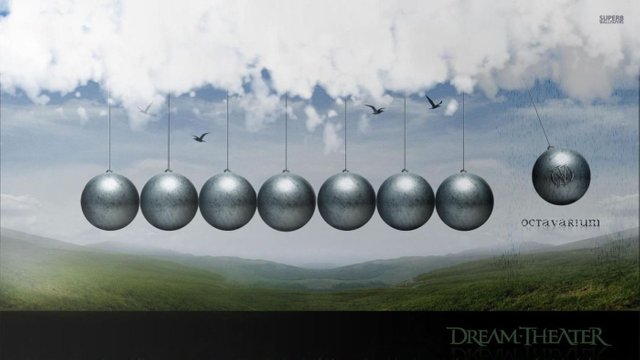

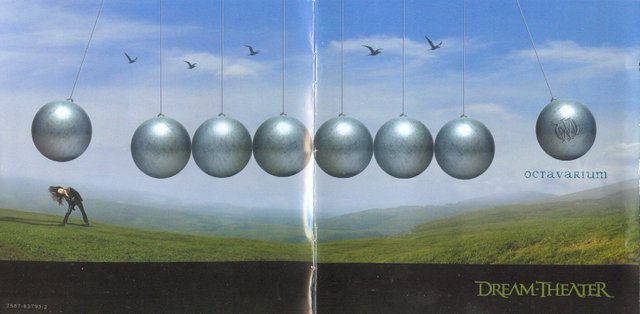
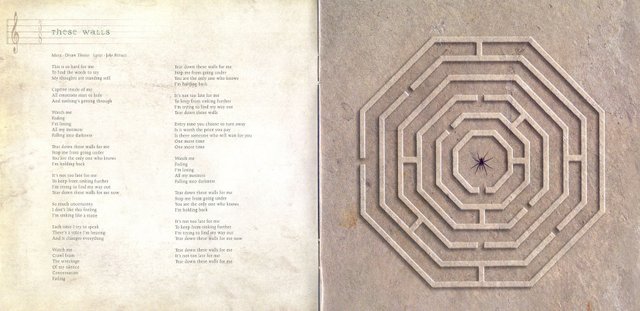
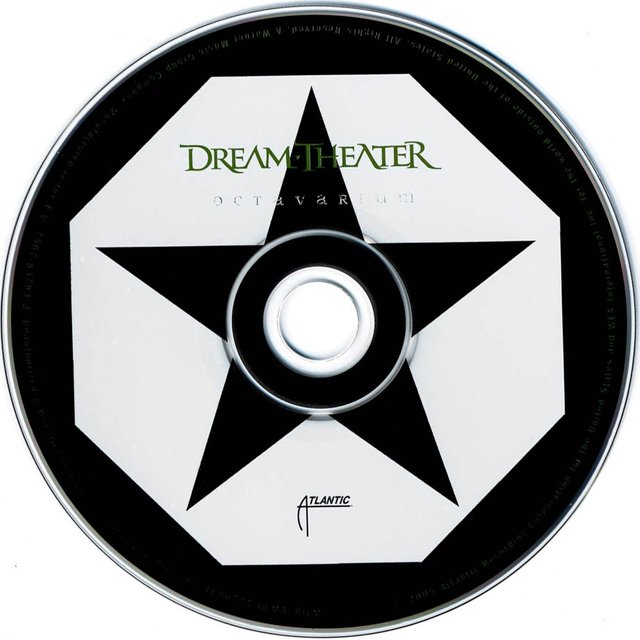
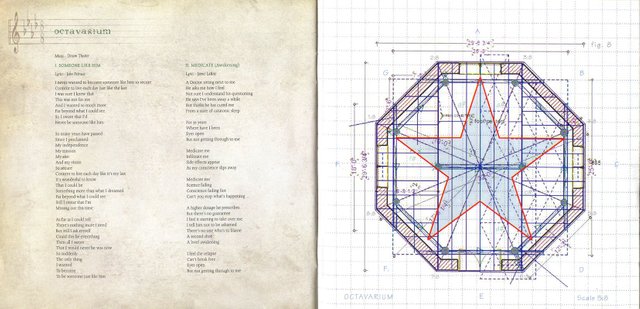

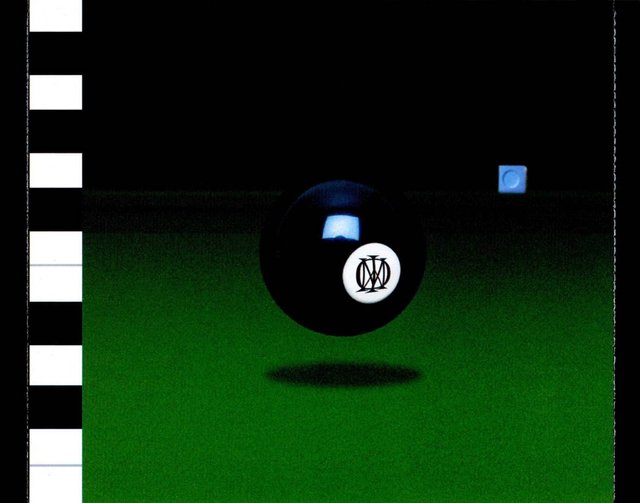
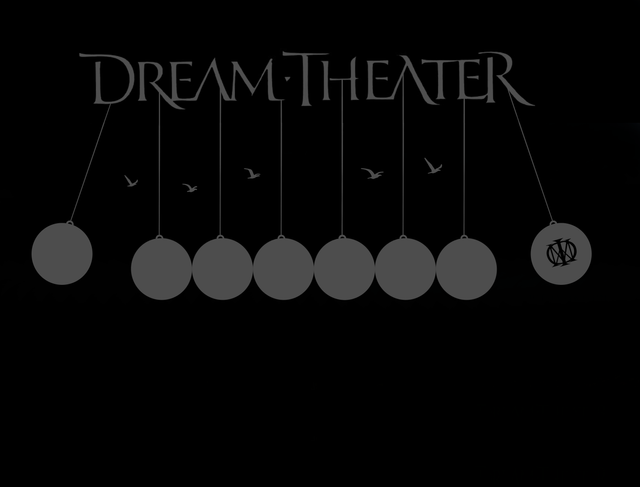
Go here https://steemit.com/@a-a-a to get your post resteemed to over 72,000 followers.
Congratulations! This post has been upvoted from the communal account, @minnowsupport, by albertocotua from the Minnow Support Project. It's a witness project run by aggroed, ausbitbank, teamsteem, theprophet0, someguy123, neoxian, followbtcnews, and netuoso. The goal is to help Steemit grow by supporting Minnows. Please find us at the Peace, Abundance, and Liberty Network (PALnet) Discord Channel. It's a completely public and open space to all members of the Steemit community who voluntarily choose to be there.
If you would like to delegate to the Minnow Support Project you can do so by clicking on the following links: 50SP, 100SP, 250SP, 500SP, 1000SP, 5000SP.
Be sure to leave at least 50SP undelegated on your account.
Congratulations! Your post has been selected as a daily Steemit truffle! It is listed on rank 1 of all contributions awarded today. You can find the TOP DAILY TRUFFLE PICKS HERE.
I upvoted your contribution because to my mind your post is at least 52 SBD worth and should receive 221 votes. It's now up to the lovely Steemit community to make this come true.
I am
TrufflePig, an Artificial Intelligence Bot that helps minnows and content curators using Machine Learning. If you are curious how I select content, you can find an explanation here!Have a nice day and sincerely yours,

TrufflePig